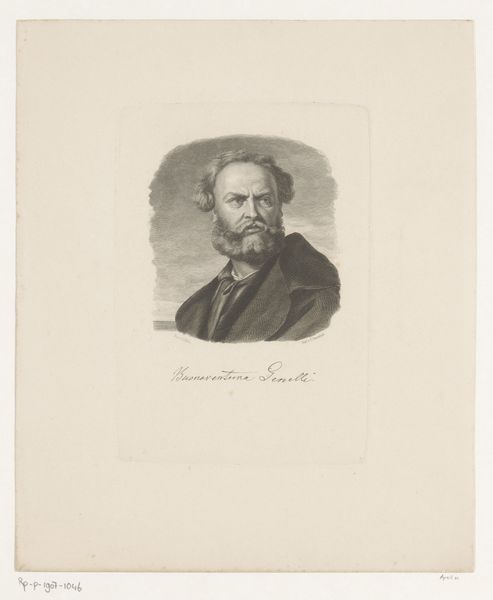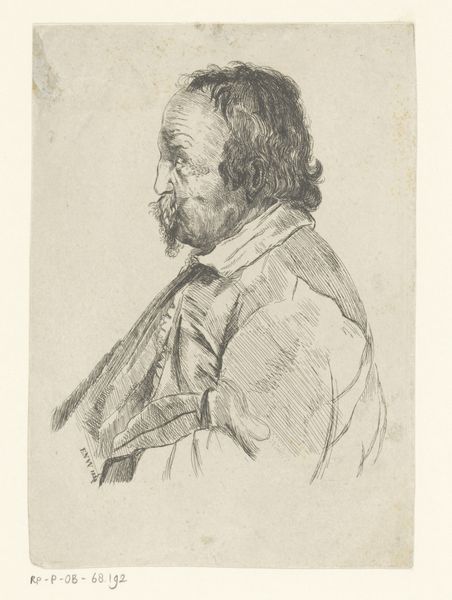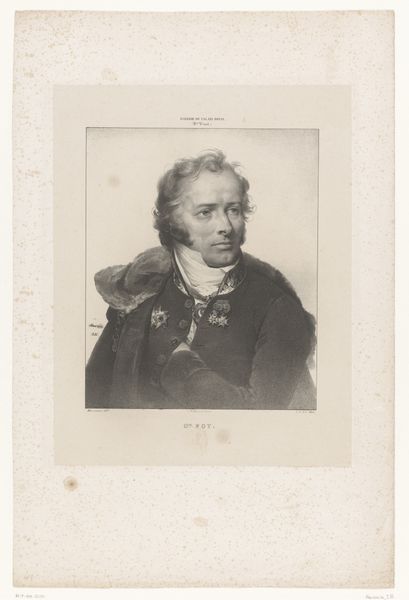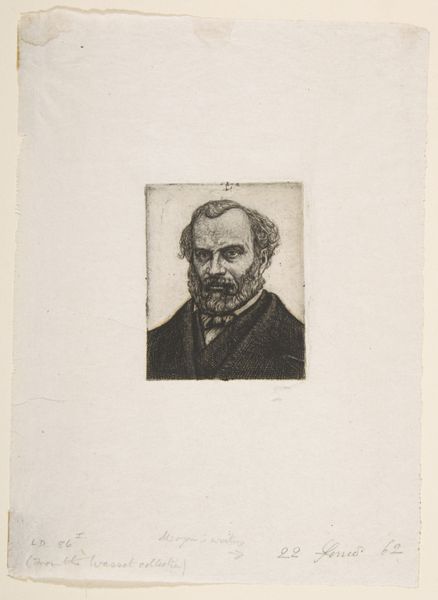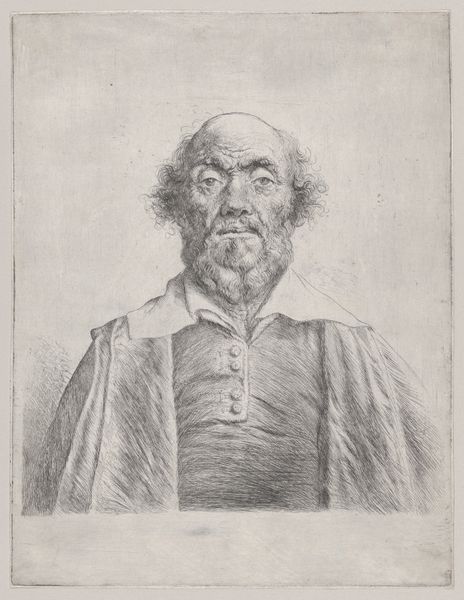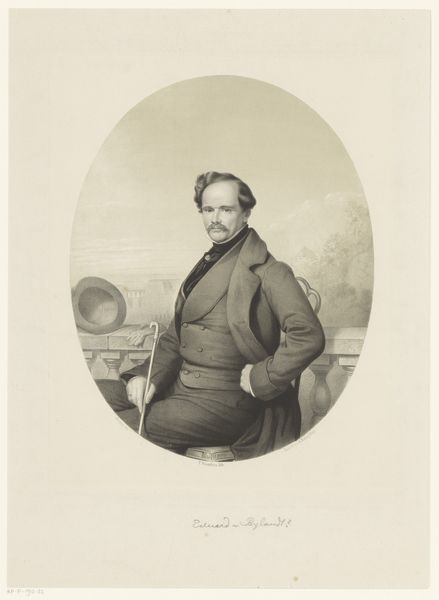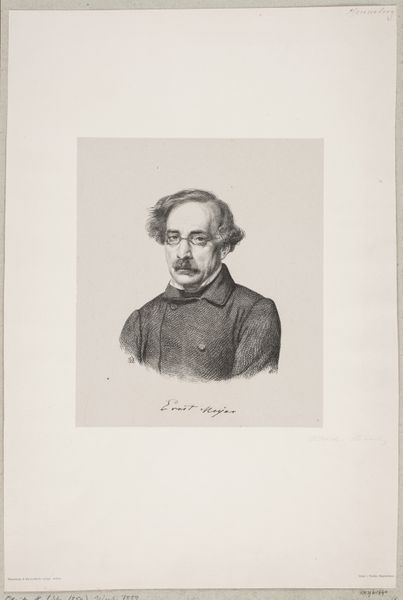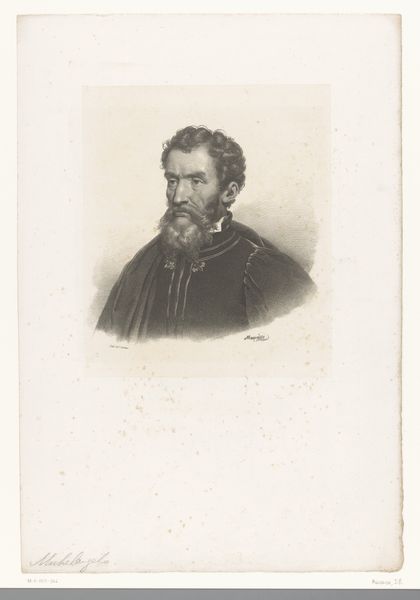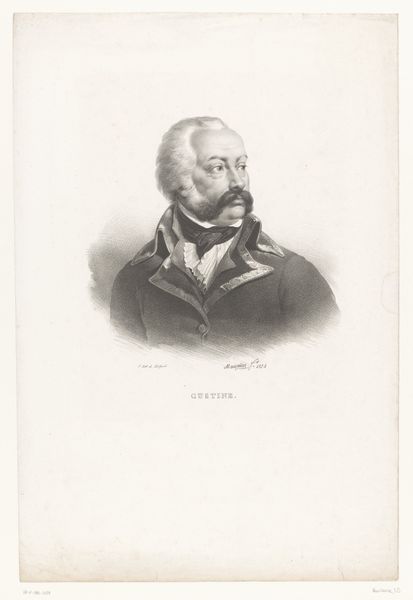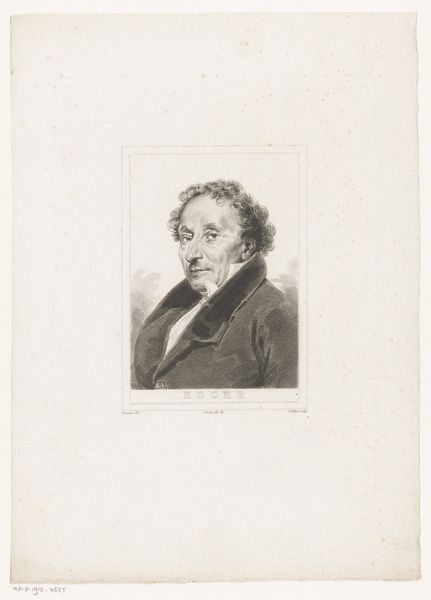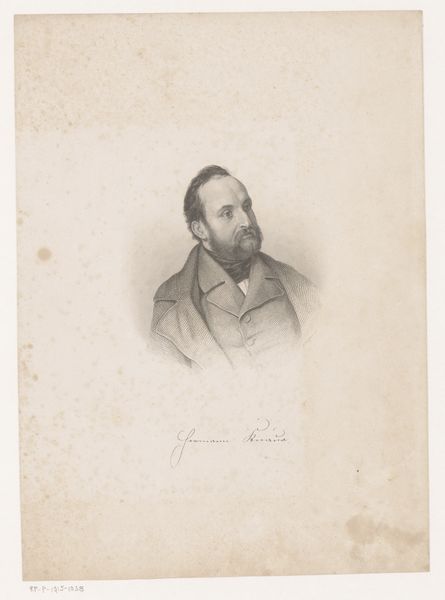
print, engraving
#
portrait
# print
#
portrait drawing
#
engraving
#
realism
Dimensions: 130 mm (height) x 110 mm (width) (plademaal)
Editor: Here we have Jacob Kornerup's 1853 engraving of Søren Sørensen Grønbech. It’s a stark portrait, and there’s a weight in his expression that's very compelling. What do you see in this piece, considering its time? Curator: Beyond the surface realism, I see a fascinating negotiation of power and representation. Consider the context: 1853 was a period of intense social and political change. The emerging bourgeoisie sought to assert their identity, and portraiture became a tool for this. How does the artist position Grønbech within the social hierarchy of the time, and how does Grønbech seem to confront his historical placement in the piece? Editor: That's interesting. It's not an overtly flattering portrait, is it? Curator: Exactly. It challenges the idealised representations often associated with the upper classes. We see a certain ruggedness, a lived experience etched into his face. It's almost a rejection of aristocratic refinement. Perhaps a statement about the value of a different kind of strength? What are your thoughts? Does his attire complicate the representation, perhaps grounding him to the clergy through cross adornments on his tunic? Editor: I hadn't thought of it like that, but now that you mention the ruggedness contrasted against those crosses... I am thinking there is commentary here regarding religion! Thanks for the insightful perspective. Curator: And thank you for drawing me into this conversation! By questioning these representations, we can better understand the complex dynamics of identity, class, and power in 19th-century Denmark. Editor: I appreciate that context. I'll definitely look at portraits differently now.
Comments
No comments
Be the first to comment and join the conversation on the ultimate creative platform.
